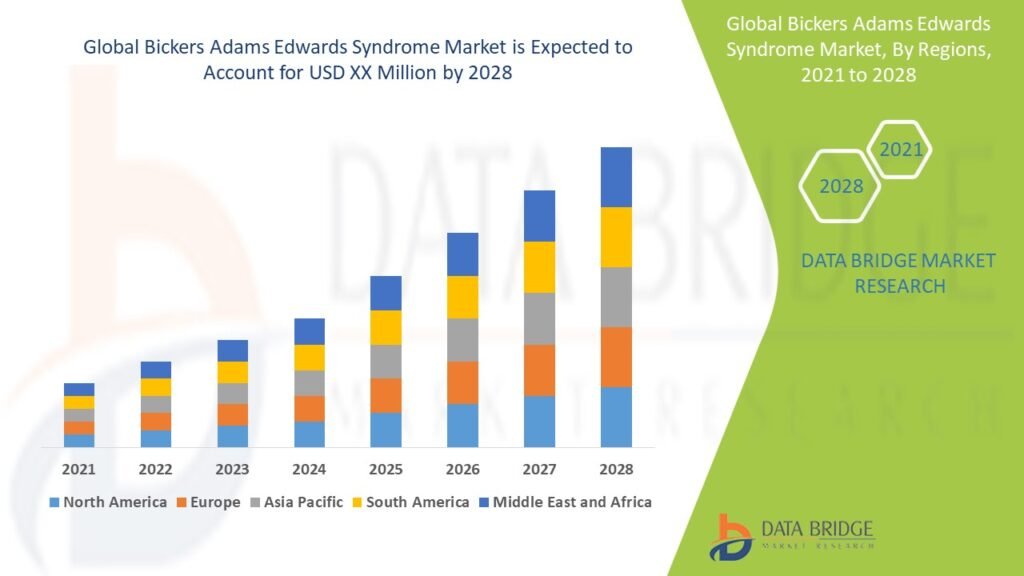Bickers Adams Edwards Syndrome Market Growth Outlook, Innovations, Treatment Trends, and Future Forecast to 2033

Introduction
Bickers Adams Edwards Syndrome Market, also known as X-linked hydrocephaly, is a rare genetic disorder primarily affecting the central nervous system, leading to congenital hydrocephalus and other neurological abnormalities. This X-linked recessive condition is associated with mutations in the L1CAM gene, and it predominantly affects male infants. Although its prevalence is low, the complexity and severity of symptoms make it a significant focus within the rare disease and pediatric neurology treatment landscape. The global Bickers Adams Edwards Syndrome market is gradually gaining traction due to growing awareness, advancements in diagnostics, and the development of targeted therapies.
Market Overview
The Bickers Adams Edwards Syndrome market is currently niche but expected to grow steadily over the forecast period due to increased genetic testing, investment in orphan disease research, and improved healthcare infrastructure. In 2024, the market was estimated at approximately USD 35 million and is projected to reach USD 78 million by 2033, growing at a CAGR of 9.2%. This growth is supported by initiatives from healthcare organizations, patient advocacy groups, and increased governmental focus on rare diseases.
Key Market Drivers
Rising Awareness and Early Diagnosis
Increased education among pediatricians and genetic counselors has led to better identification of the syndrome at birth or during the prenatal stage. The availability of fetal MRI and genetic testing has significantly improved diagnostic accuracy.
Advancements in Genomic Medicine
The rise of next-generation sequencing (NGS), whole exome sequencing, and gene panels has enabled early and accurate detection of L1CAM mutations, contributing to early intervention and management strategies.
Government Support and Orphan Drug Designation
Public health initiatives and incentives such as orphan drug designation and fast-track approvals in major markets are encouraging pharmaceutical companies to invest in developing treatments for rare disorders like Bickers Adams Edwards Syndrome.
Support from Advocacy Organizations
Nonprofit foundations and rare disease networks are raising awareness, funding research, and helping families connect with medical professionals and clinical trials, contributing to market expansion.
Market Segmentation
By Treatment Type
Surgical Intervention (Ventriculoperitoneal shunt, Endoscopic third ventriculostomy)
Supportive Therapy (Physical therapy, Speech therapy, Occupational therapy)
Pharmacological Management (For associated symptoms like seizures or spasticity)
By Diagnosis
Genetic Testing
Imaging Techniques (Ultrasound, Fetal MRI, CT scan)
Clinical Evaluation
By End User
Hospitals
Pediatric Neurology Centers
Genetic Clinics
Research and Academic Institutions
By Distribution Channel
Hospital Pharmacies
Specialty Clinics
Research Institutes
Challenges
Low Prevalence and Awareness
Due to its rarity, many healthcare professionals remain unfamiliar with Bickers Adams Edwards Syndrome, which can lead to delayed or misdiagnosed cases. This limits the potential market size and slows the development of targeted treatments.
Limited Therapeutic Options
Currently, there is no cure for the condition. Management is largely symptomatic and supportive, focused on controlling hydrocephalus and associated neurological impairments. The absence of disease-modifying drugs restricts treatment advancements.
High Cost of Diagnosis and Management
Advanced imaging and genetic testing are expensive, and access may be limited in low-resource settings. Surgical interventions like shunting also incur significant healthcare costs and risks.
Ethical and Clinical Trial Constraints
Conducting clinical trials for rare pediatric neurological diseases faces ethical challenges, small patient populations, and stringent regulatory requirements, which can hinder drug development efforts.
Emerging Trends
Gene Therapy Research
While still in the preclinical or experimental stages, gene-editing technologies such as CRISPR-Cas9 are being explored for correcting L1CAM mutations in vitro. These innovations hold potential for future treatment approaches.
Telemedicine and Remote Counseling
Digital health platforms are helping bridge the gap in specialist access for families in remote areas, facilitating better disease management and counseling through online genetic consultations.
Multidisciplinary Care Approaches
The trend toward holistic treatment involving neurosurgeons, geneticists, therapists, and psychologists is gaining momentum, improving patient quality of life and enabling integrated care.
Prenatal Screening Advancements
Prenatal genetic screening and non-invasive prenatal testing (NIPT) are increasingly adopted by high-risk families, allowing early detection and informed decision-making.
Biomarker Development
Ongoing research aims to identify novel biomarkers for early detection and prognosis of hydrocephalus and associated neurodevelopmental conditions, offering better clinical monitoring tools.
Regional Insights
North America leads the global market due to well-established healthcare systems, reimbursement support, and strong focus on rare disease research. The U.S. sees the highest number of reported cases and clinical research activity.
Europe follows closely, with countries like Germany, the U.K., and France investing in rare disease initiatives, registries, and orphan drug development. Regulatory support from the European Medicines Agency (EMA) further drives the market.
The Asia-Pacific region, though underpenetrated, is expected to witness steady growth driven by increasing healthcare access, rising birth rates, and growing awareness among medical professionals.
Future Outlook
Over the coming decade, the Bickers Adams Edwards Syndrome market will benefit from a more proactive approach toward early screening, newborn genetic testing, and the emergence of personalized medicine. Although curative treatments are still distant, continuous innovation in neurogenetics and surgical care is expected to enhance life expectancy and reduce complications. Patient-centric research models and cross-border collaborations will further accelerate treatment development and patient support initiatives.
Source: https://www.databridgemarketresearch.com/reports/global-bickers-adams-edwards-syndrome-market
Conclusion
The Bickers Adams Edwards Syndrome market, though small in size, is critical in the broader context of rare neurological diseases. The integration of genomic technologies, healthcare digitization, and multidisciplinary treatment protocols is shaping a more responsive and supportive ecosystem for affected patients. With increasing attention from both healthcare providers and pharmaceutical innovators, the future of this market holds promise for more precise, earlier, and improved care for patients and families affected by this rare but impactful condition.
